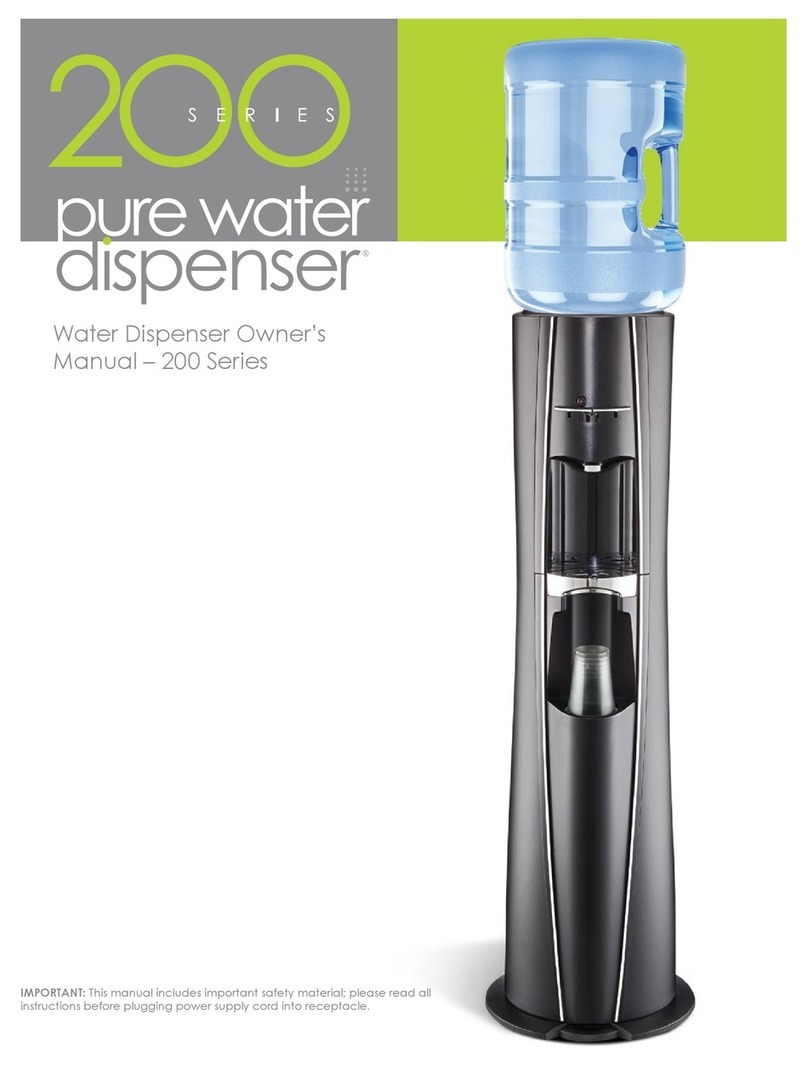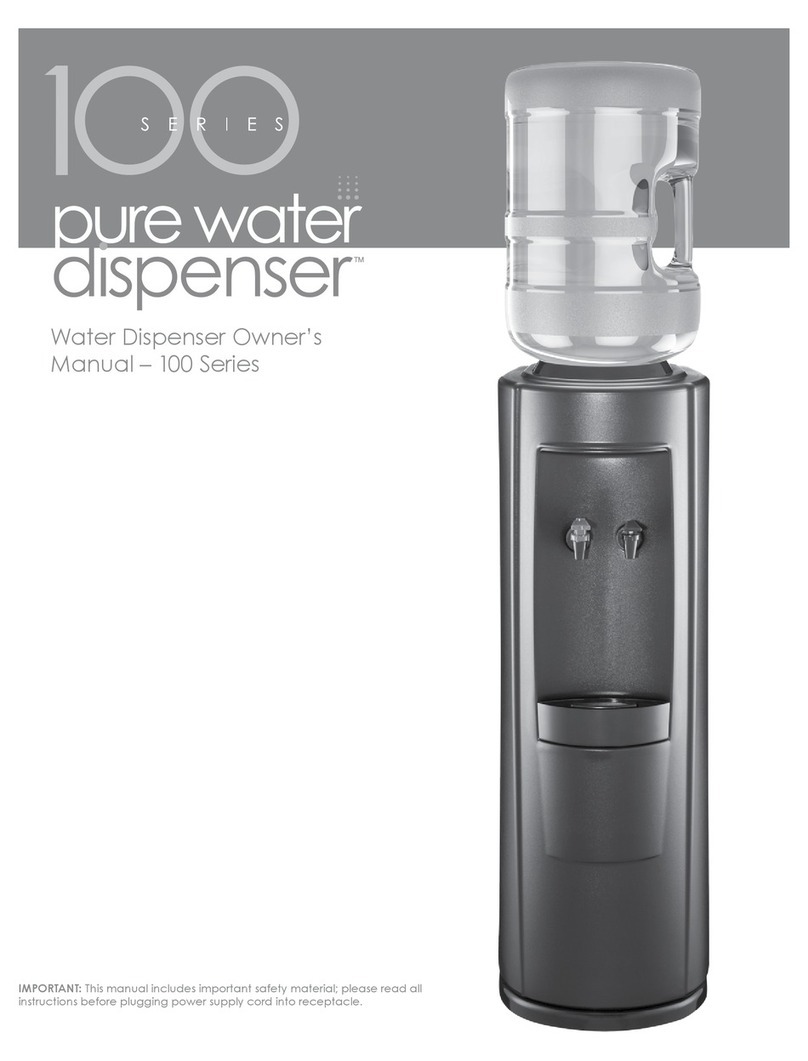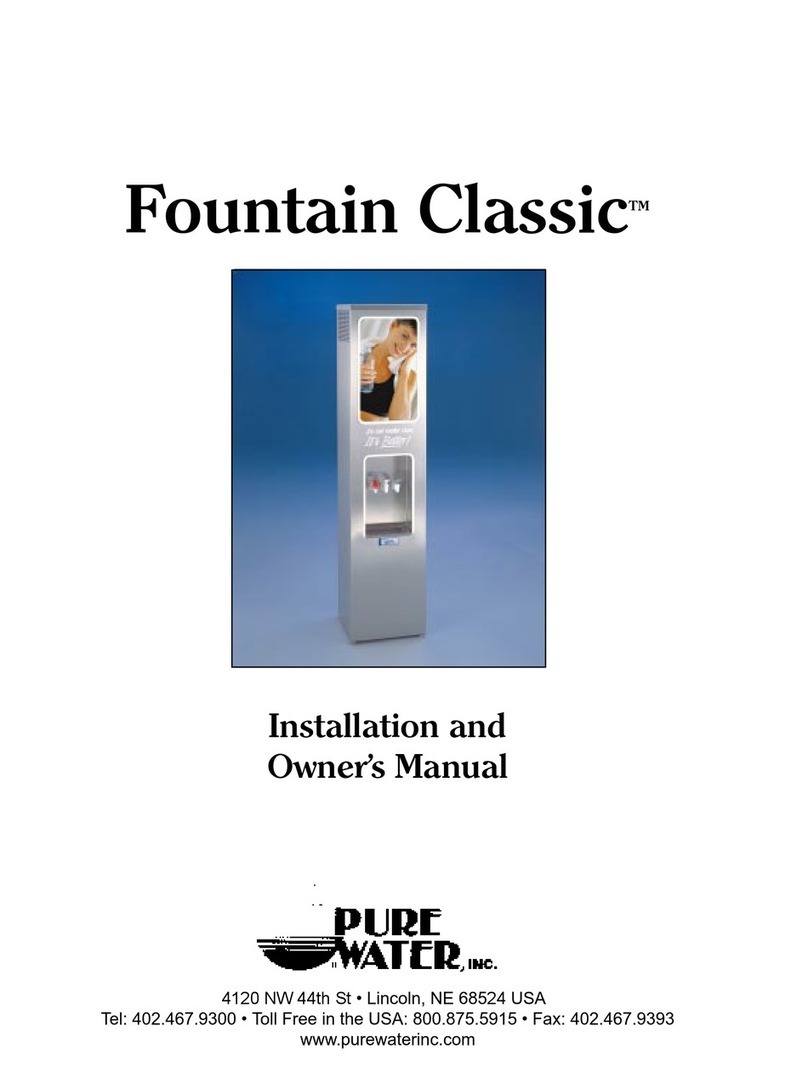NO FRILLS 500/800 Guide
The general scopes of the NO FRILLS desalination-installations
The NO FRILLS RO systems are laid out according to the last realizations of the revers-
osmosis-technology. These installations enjoy ever more severe popularity with Cruisers,
sport-fishers and on boats, where mounting space is limited.
The NO FRILLS systems are simple to use and uncomplicated in maintenance.
The NF 500 produces about. 78 liters / h, the NF 800 produces, about. 145 liters / h. See the
reduced performance with temperatures below 25°C.
2.2 descriptions of the individual parts
The 230 V boost-pump. (LP Pump)
The boost-pump is required to feed the sea-water, if the high-pressure-pump is built-in at or
above the waterline. The booster-pump must be installed below the waterline. The booster-
pump supports the start-process, trapped air is fast removed.
Hand-water-test-appliance (Optional) N.A. on COMFORT and COMPACT Models
The hand-water-Tester measures how much ppm of the TDS is still in the water. The value
from the World-Health-Organization, WHO, for good drinking water, is 500 ppm.
ppm = parts per million TDS (total dissolved Solids)
Pressure gauges
The pressure gauge shows how much pressure the high pressure-pump delivers. The work-
area is between 800 and 950 psi.
High pressure-pump
The high pressure-pump pumps waters through the membrane
Flow meter
How much drinking water is produced in the hour shows the flow-meter.
(In U.S. gallons per hour) 1 U.S. Gallon = 3.78 liters. 2
Pressure Regulator
The pressure control allows the operator to regulate the pressure. 800 psi is normal.
Sea-water-filters (option) for BASIC and STANDARD
The sea-water-filter keeps back coarse particles and spares the booster-pump and the pre-
filter consequently.
Pre-filter
The pre-filter has a permeability of 20/5 microns and filters the fine particles.
Sample Valve (option) N. A. for COMFORT and COMPACT Models
The sample-valve enables to take a water-test directly at the exit of the system. This is to the
control the water quality so that one can prevent the influx of bad water.
6



































